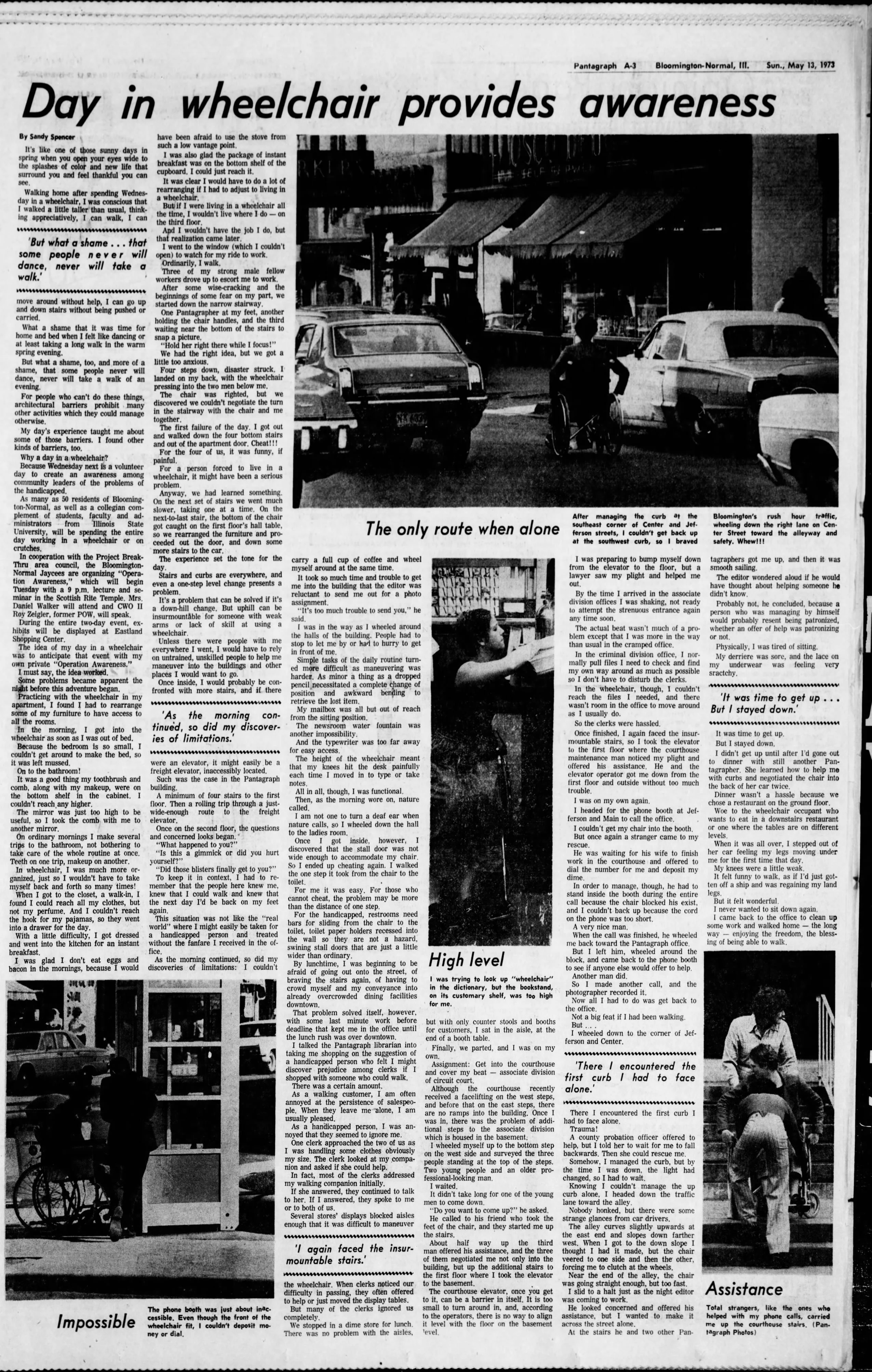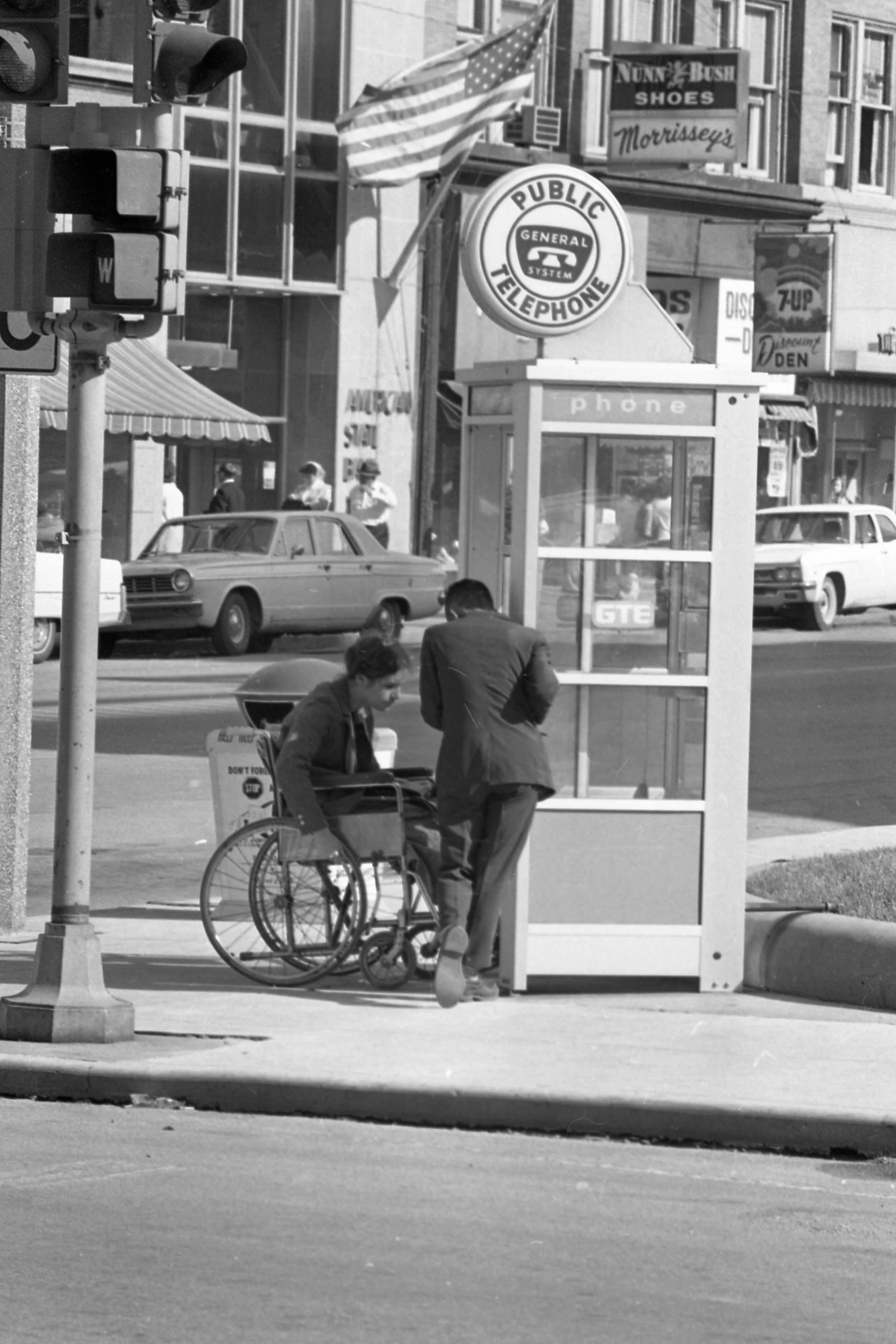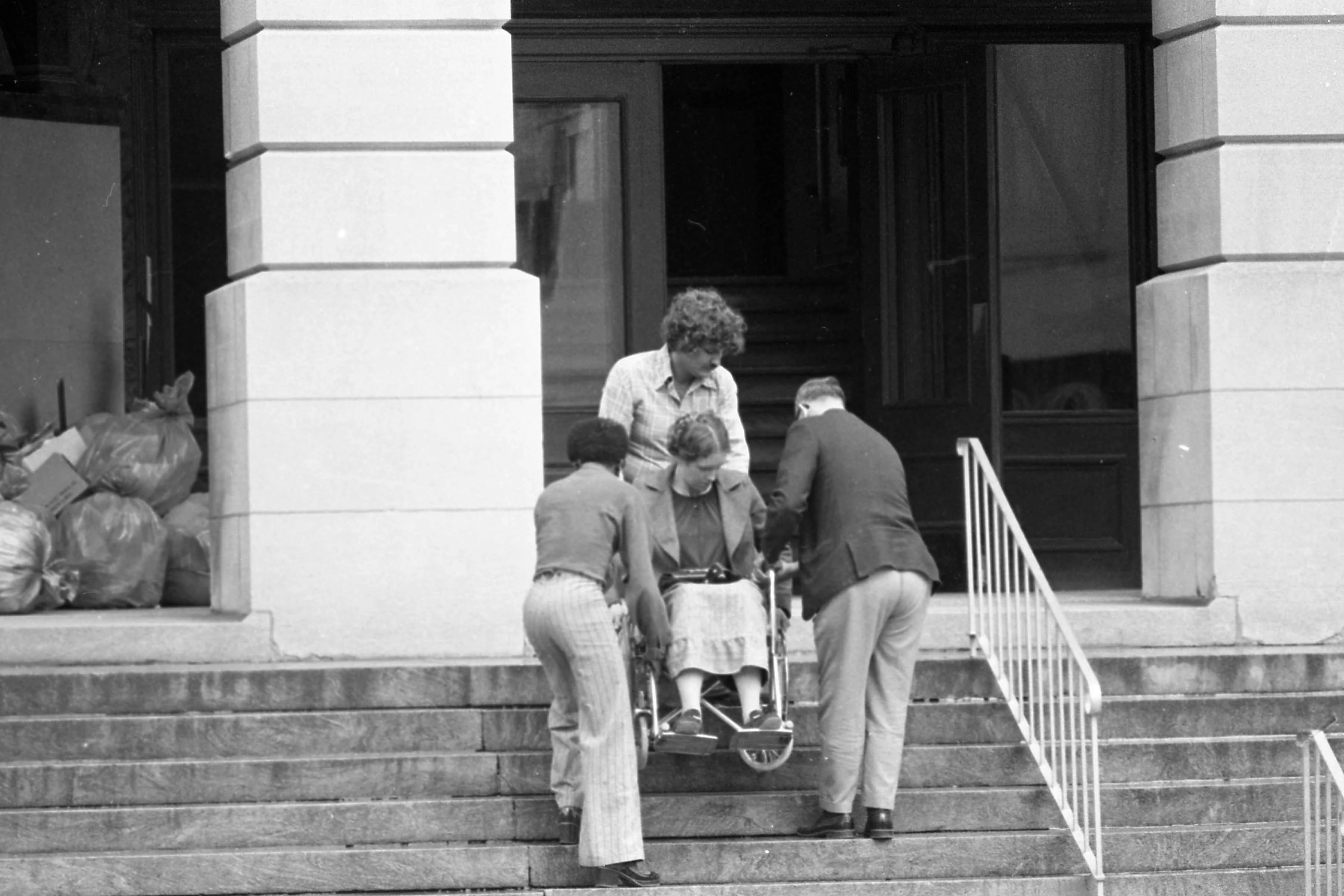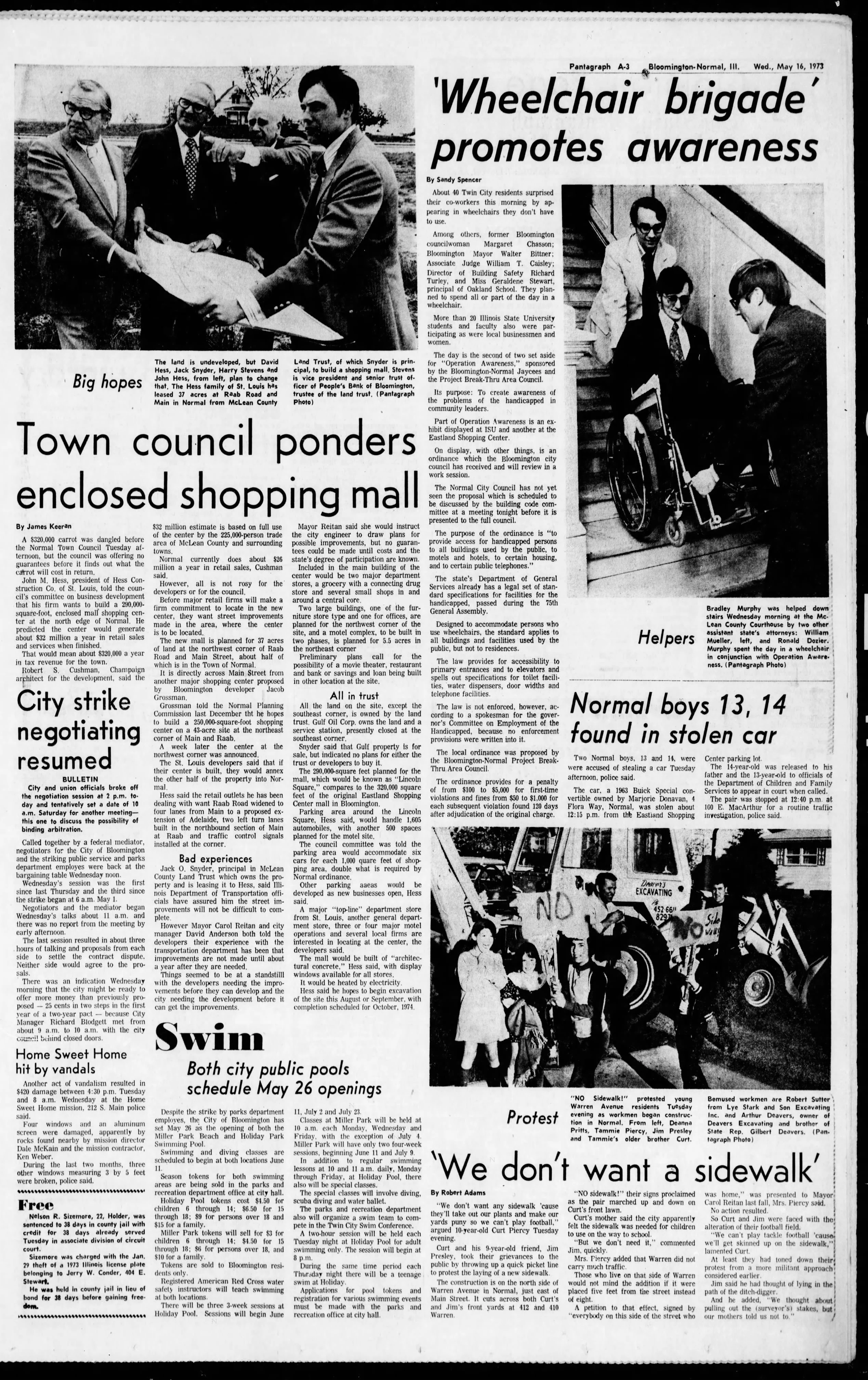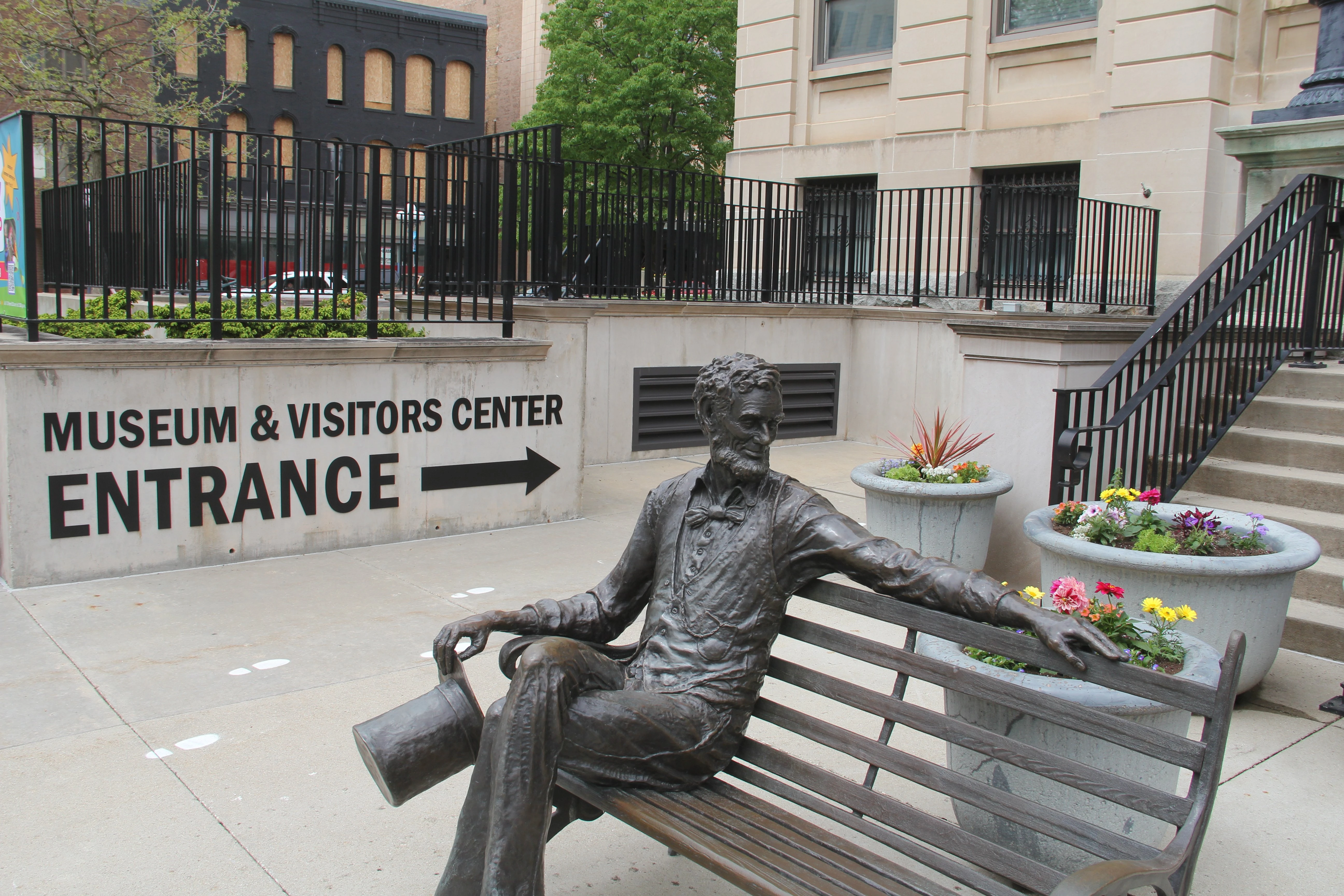Thirty-five years ago today, on July 26, 1990, President George H.W. Bush signed the Americans with Disabilities Act (ADA) into law after decades of hard-fought activism.
This piece of legislation provided a clear and comprehensive national mandate for the elimination of discrimination against individuals with physical and mental disabilities. It ensured equal opportunity for individuals in various aspects of life, including employment, transportation, public accommodations, and telecommunications. The ADA also mandates reasonable accommodations for employees with disabilities and accessibility requirements in public spaces.
However, before the passage of the ADA, if you were a Twin Cities resident who used a wheelchair, many places were inaccessible.
On Wednesday, May 9, 1973, Pantagraph reporter Sandy Spencer spent a "Day in a Wheelchair" to highlight accessibility barriers in our community.
Daily tasks were a challenge for her, particularly navigating stairs. The apartment she lived in was on the third floor, and it took three co-workers to carry her down the stairs. Even with their assistance, she could not complete the descent in the chair due to a tight turn.
When she needed to use the restroom, she found the bathroom stalls too small to accommodate the wheelchair, making it once again impossible to complete an everyday task due to the physical limitations of the built environment around her.
Navigating curbs around downtown streets was also problematic because of the one-step level changes. And using a pay phone required Sandy to enlist a good Samaritan passing by to dial the number she wanted and insert the coin in the phone because her wheelchair could not fit in the booth.
However, the biggest challenge she faced was accessing the McLean County Courthouse — the McLean County Museum of History today — because the only way to enter the building was via stairs. Her beat for The Pantagraph was the associate division of the Circuit Court, which required her to go to the courthouse basement to access records. Fortunately, when she arrived at the building, three bystanders on the west steps offered to help her and carried her in the wheelchair up the 13 steps to enter the building, and an additional 11 steps to get to the first floor so she could access the elevator to go to the clerk's office located in the basement.
Sandy's reporting increased awareness of local accessibility issues. A week later, "Operation Awareness" amplified these issues once again when 40 well-known citizens of Bloomington-Normal also spent a day in a wheelchair. The Bloomington-Normal Jaycees and the Project Break-Thru Area Council sponsored the initiative.
Operation Awareness also included an exhibit at ISU and Eastland Shopping Center, which featured, among other things, an ordinance aiming "to provide access for handicapped persons to all buildings used by the public" for the Bloomington City Council and Normal Town Council to consider.
Despite this increased awareness and action, it took 11 years for the courthouse to become accessible to people who used wheelchairs.
In 1984, the McLean County Board voted unanimously to construct a handicap-accessible entrance for the courthouse on the street level on the south side of the building. The county replaced the steps and sidewalk leading to the street to create this Washington Street entrance, which now serves as the entryway to the McLean County Museum of History and its Cruisin' with Lincoln on 66 Visitors Center & Gift Shop.
Today, thousands of visitors, regardless of ability, can enjoy and experience history at the Museum thanks to local collective action and the ADA.


